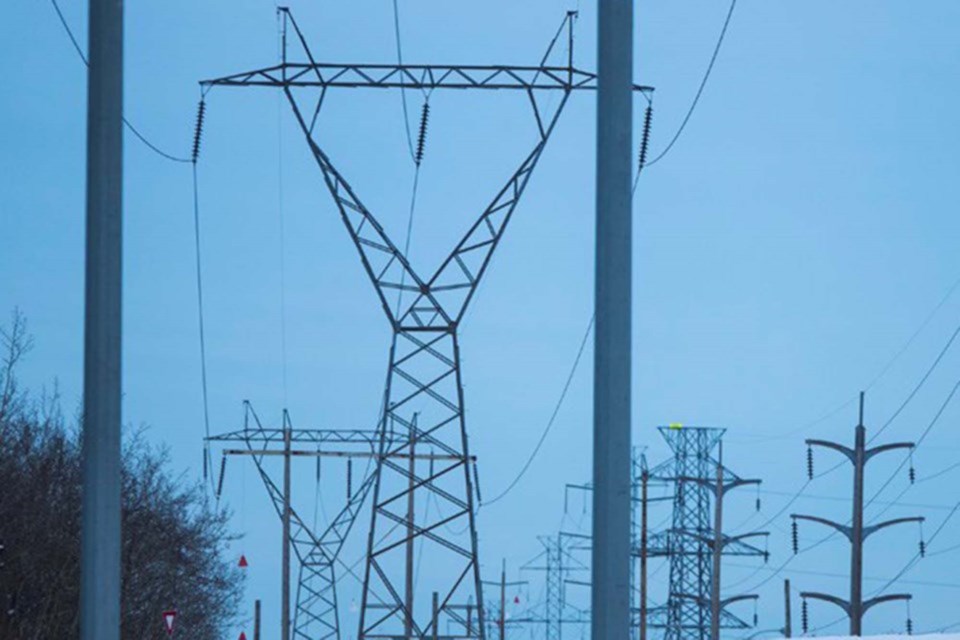It will cost billions of dollars for Alberta to transition to a net-zero electricity grid, according to a new report from the province’s electrical systems operator.
Between $44 billion and $52 billion in capital investments would be needed to reach the net-zero targets set out by the federal government by 2035, said the Alberta Electrical Systems Operator (AESO) in a 78-page report released last week.
On Thursday Kevin Dawson, AESO director of forecasting and analytics, presented the report to stakeholders and said there is a need for big investments to get the grid to net-zero, which will include meeting demand needs and getting the energy out to consumers.
The report explored three different electricity generation scenarios for the future, with different mixes between renewable generation, natural gas with carbon capture and storage, and hydrogen generation
It is possible for Alberta to achieve a net-zero supply by 2035, Dawson said, however there was significant risk found in each of the scenarios AESO considered.
“We really need almost perfect alignment of a number of factors in order to achieve a 2035 date,” Dawson said.
There is still a lot of regulatory policy uncertainty, Dawson said, along with a significant amount of new assets that need to enter into the electricity system.
“So, there's approval and then also construction timeline risk,” Dawson said.
While Alberta is racing to try to meet the 2035 net-zero goals, the rest of the world is also trying to green up their electricity grids, and will be trying to get their hands on the same products Alberta is, Dawson said, resulting in supply constraints and further timeline challenges.
There is also uncertainty with the new technology to contend with, Dawson said, as generally, energy infrastructure development has long timelines to start with.
Costs for electricity are also expected to increase once the province reaches net zero, Dawson said, relative to the current supply mix the province has.
“We see a cumulative cost impact over the next 20 years of somewhere between 30 to 35 per cent. The bulk of those costs are from generation capital investment and operating costs,” Dawson said.
Nearly 90 per cent of the increase in costs is from capital investment and operating costs, Dawson said.
When the province starts to move closer to net zero, reducing those final emissions will be difficult. If Alberta tries to achieve zero physical emissions in the electrical system it will be extremely challenging, Dawson said,
“As you get try to get closer and closer to physical zero emissions, the operational difficulties increase immensely,” Dawson said.
But as Alberta tries to move toward a greener grid, AESO predicts the demand forecast over the next 20 years to be lower than the demand growth in the province over the previous 20 years.
“That was a period when we went through significant expansion of the oil sands industry and the related industrial activity,” Dawson said.
The assessment comes months after the federal government laid out plans for the country to move to a net-zero electricity grid by 2035. At the time, Alberta’s associate minister of natural gas and electricity, Dale Nally, said he had zero confidence Alberta could achieve those climate targets by 2035, saying the federal plan was “unworkable."
“It is a child-like ambition,” Nally said in April.
After the AESO report was released, Nally send out a statement reinforcing his position that a net-zero grid is not achievable and will cost Albertans tens of billions of dollars while also hurting energy reliability and affordability.
“The distribution system would also require further investment, not included in the $52-billion estimate, that will ultimately be borne by consumers. Any plan that means families and businesses cannot afford to heat their homes or keep their lights on is not realistic. Keeping energy reliable and affordable is critical for all Canadians," Nally said.
“As the AESO report states, reducing all electric system physical emissions to zero under the federal time frame ‘is operationally unrealistic.’”



